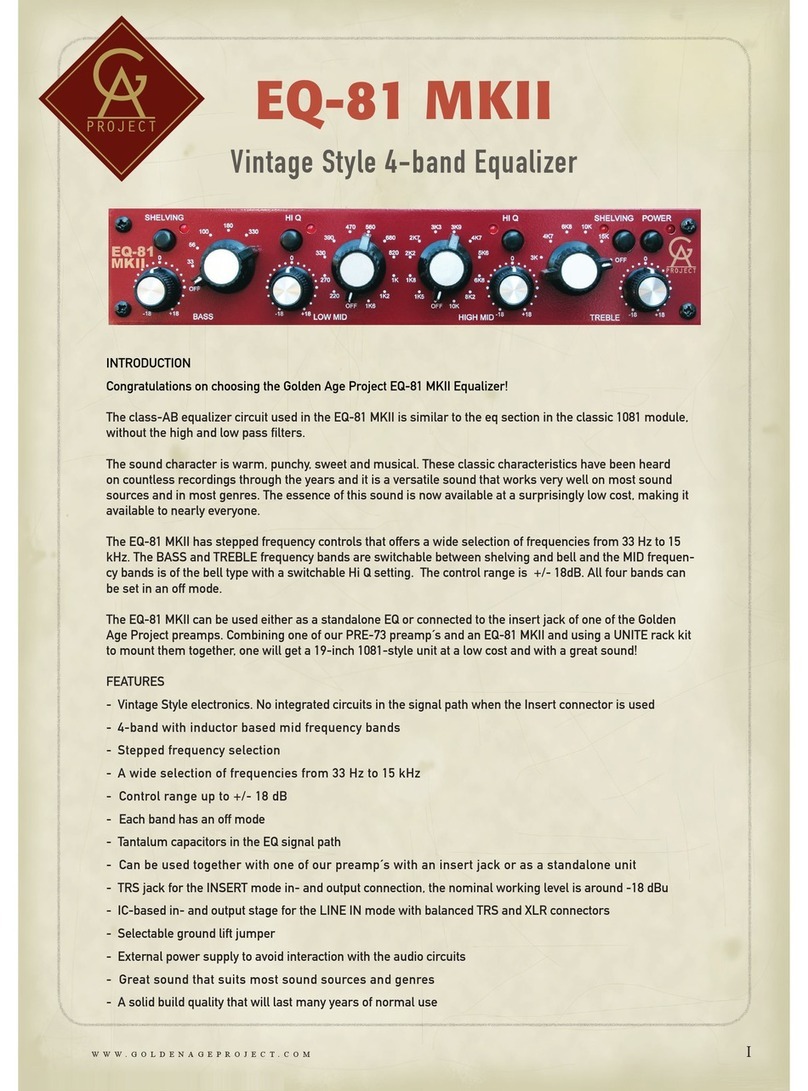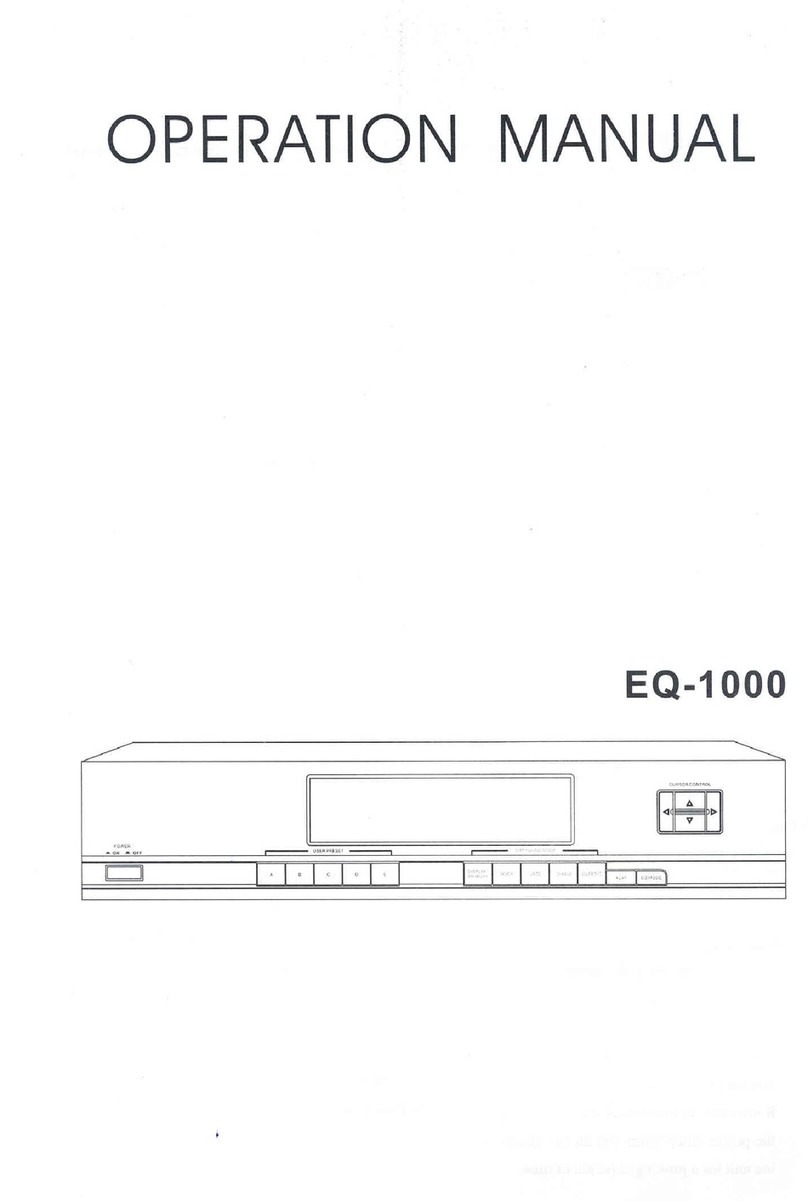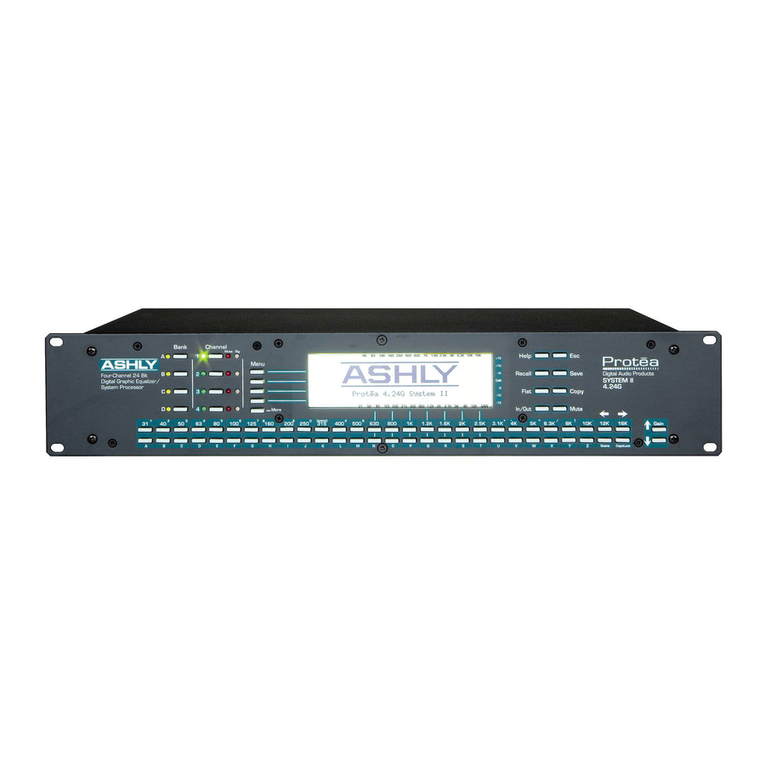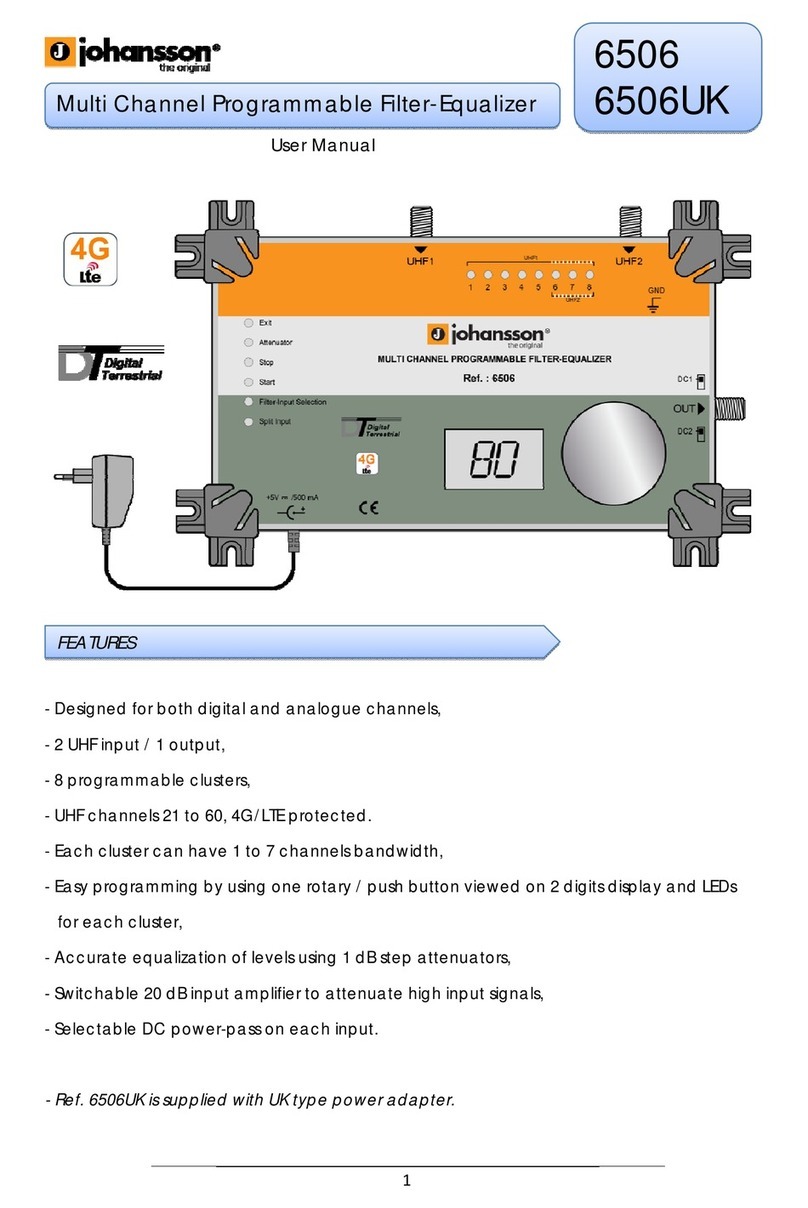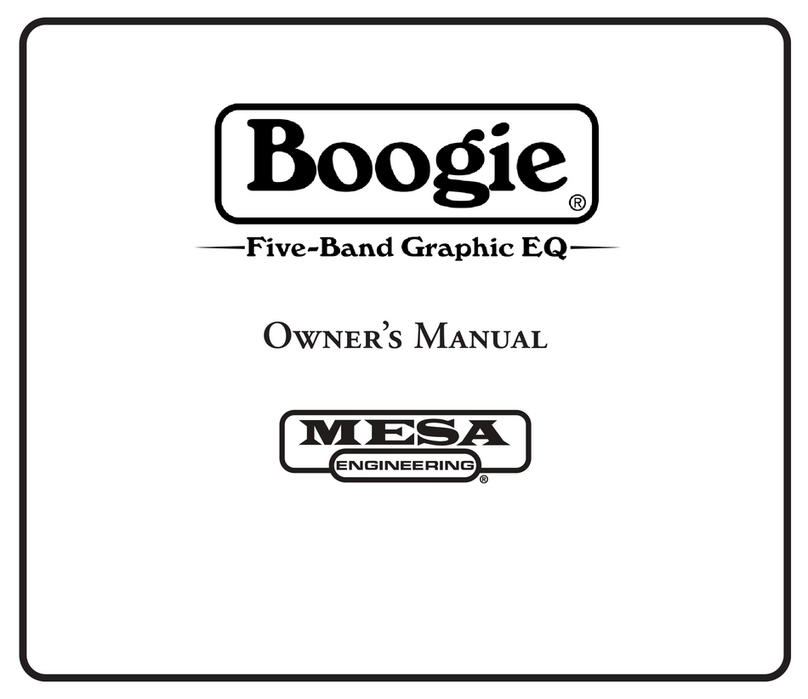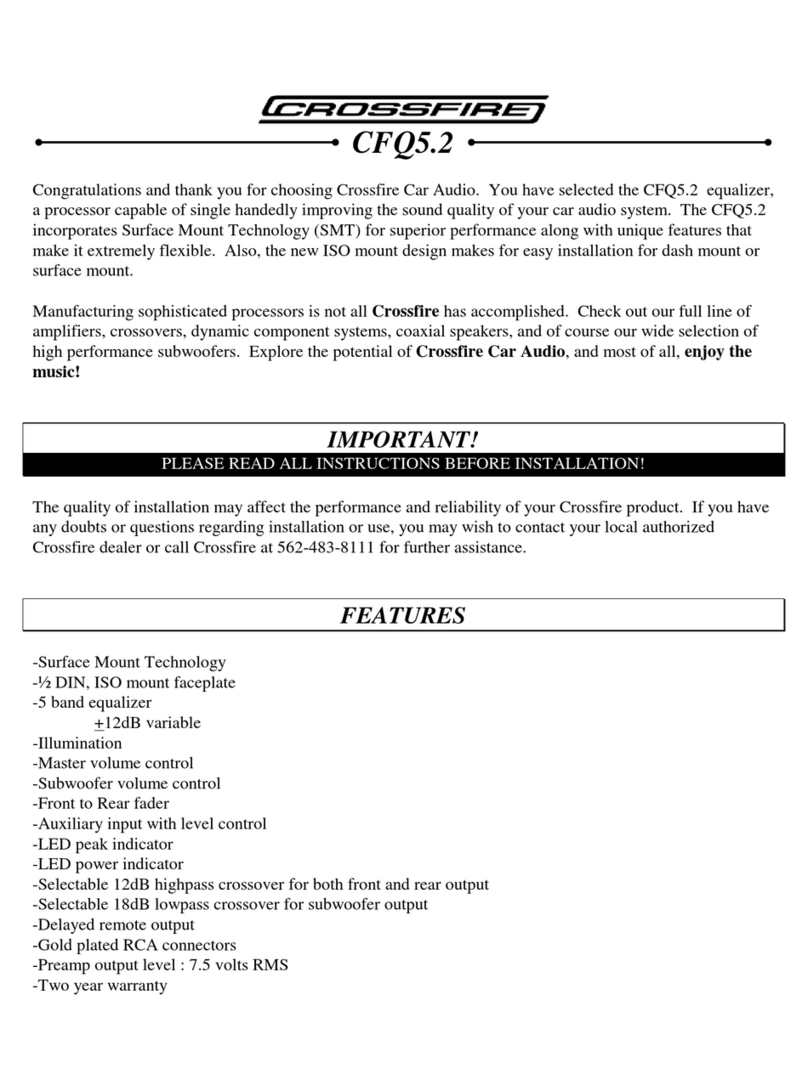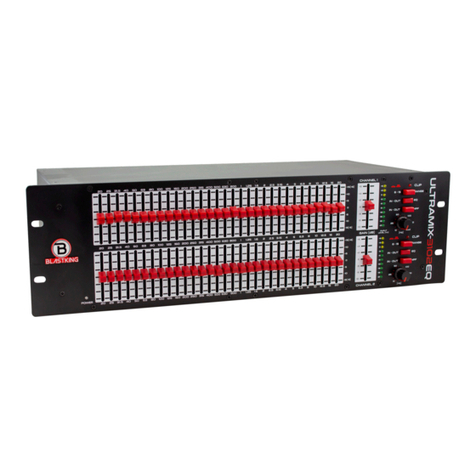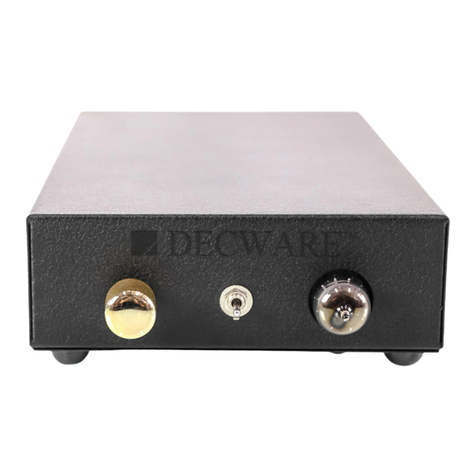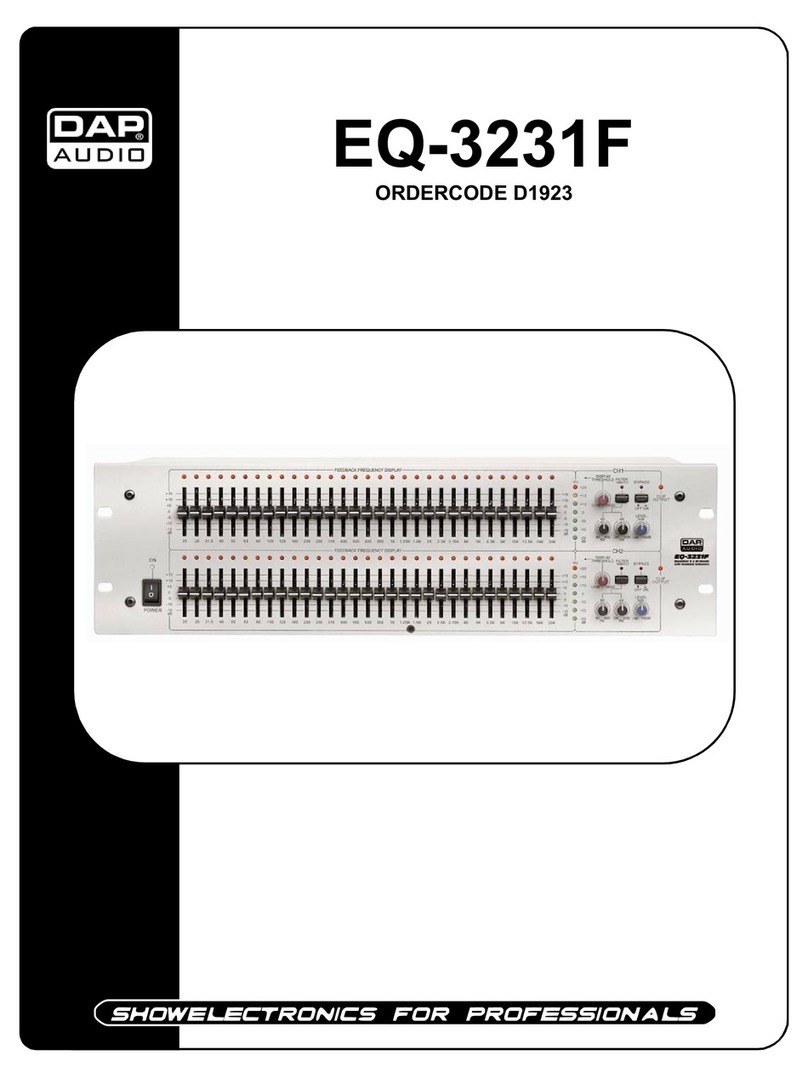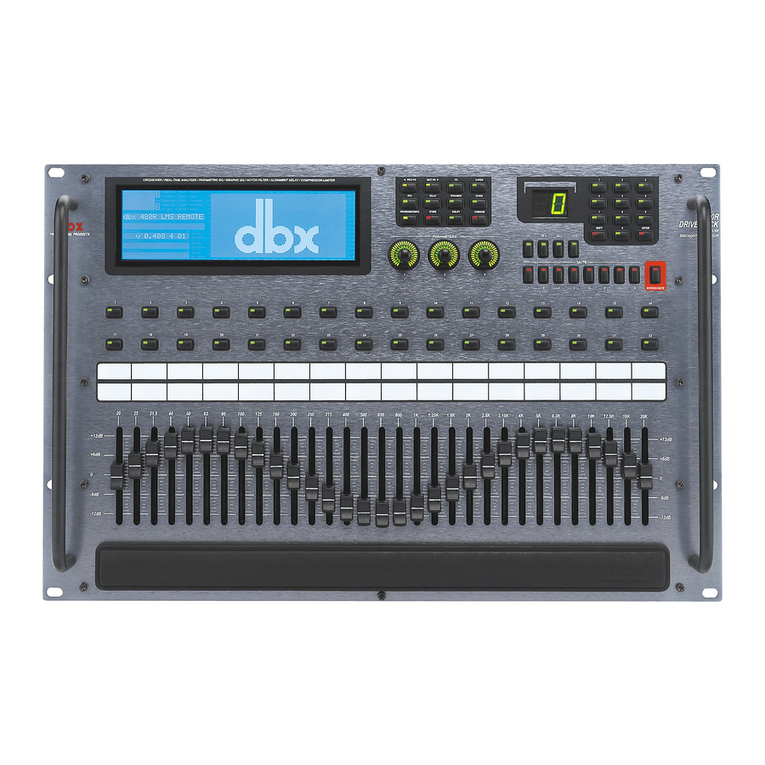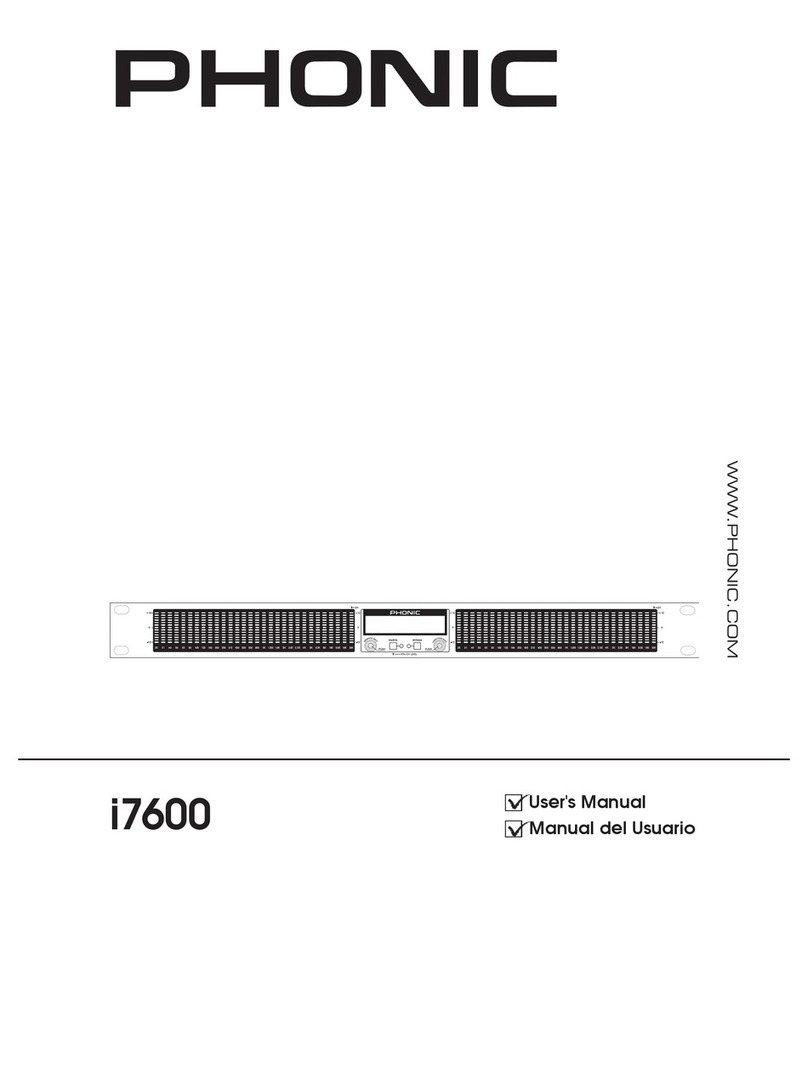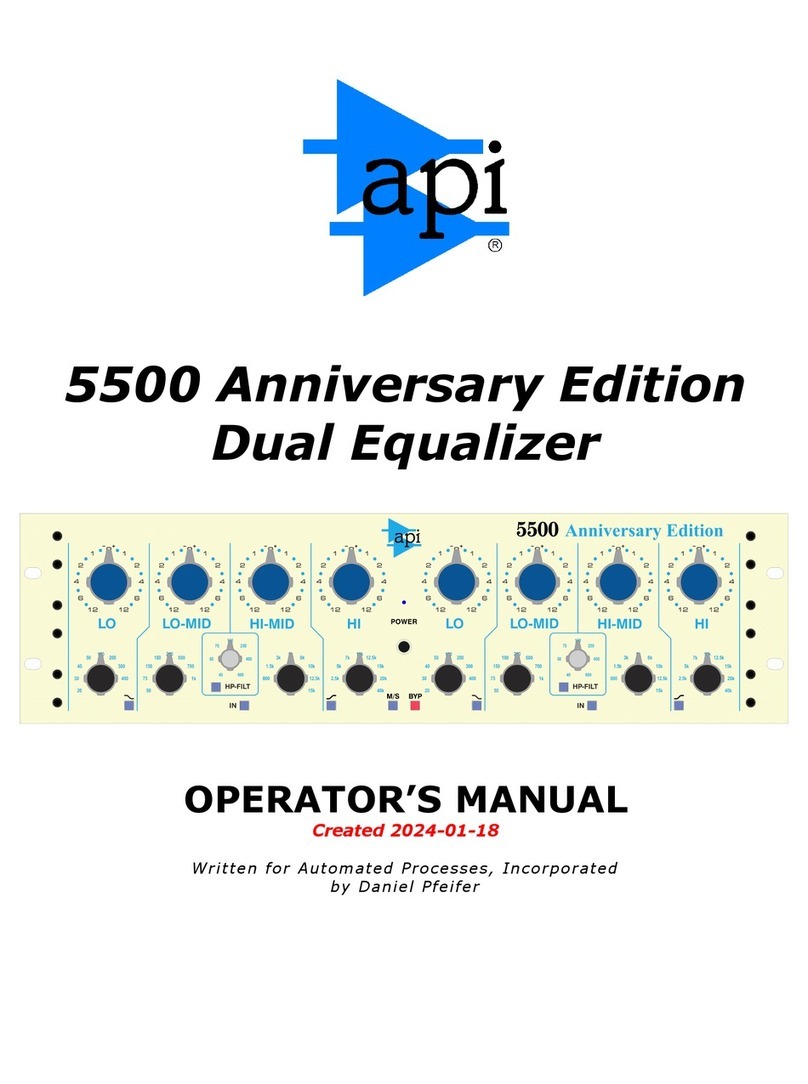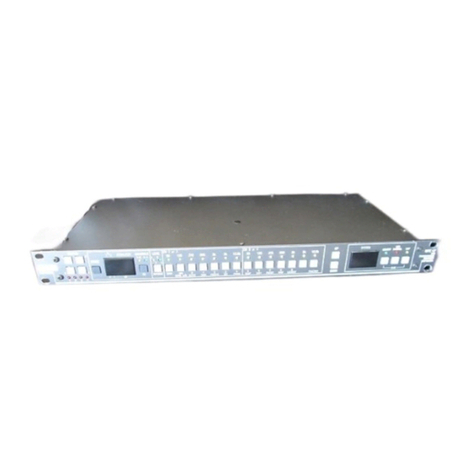Golden Age Project EQ-573 User manual

WWW.GOLDENAGEPROJECT.COM I
EQ-573
INTRODUCTION
Congratulations on choosing the Golden Age Project EQ-573 equalizer!
The class-A circuit used in the EQ-573 is similar to the eq section in the classical
1073 module. Additional frequencies have been added to the mid and high frequency
sections. The signal path uses only discrete components like resistors, capacitors,
inductors and transistors.
The sound character is warm, punchy, sweet and musical. These classic character-
istics have been heard on countless recordings through the years and it is a versatile
sound that works very well on most sound sources and in most genres.
The EQ-573 has stepped frequency controls that offers a wide selection of frequen-
cies from 33 Hz to 20 kHz. Each section can be switched off individually. There is also
a master bypass switch for easy comparisons.
The low and high frequency bands are shelving and the mid frequency band is of the
bell type. The control range is +/-15 dB for the two lower bands and +/- 18dB for the
high frequency band.
The high pass filter is of the inductor type with a slope of 18 dB / octave.
The EQ-573 cannot be used as a standalone EQ. It is designed to be used together
with the Golden Age Project PRE-573 that has an insert connector.
Combining the PRE-573 and the EQ-573 in a 500 Series rack, one will get a 1073-style
unit at a low cost and with a great sound!
Features:
- Vintage Style electronics. No integrated circuits in the signal path
- 3-band with a dual inductor based mid frequency band
- Inductor based high pass filter
- Stepped frequency selection
- Control range up to +/- 18 dB
- A wide selection of frequencies from 33 Hz to 20 kHz
- Each section has can be switched off individually
- Master Bypass switch
- Tantalum capacitors in the signal path
- Circuit board star grounding scheme
- Great sound that suits most sound sources and genres
- A solid build quality that will last many years of normal use
- Designed to be used together with the Golden Age Project PRE-573

WWW.GOLDENAGEPROJECT.COM II
CIRCUIT DESCRIPTION
The main signal path in the EQ-573 con-
sists of two gain stages that uses three
transitors each and a few resistors and
capacitors. So, all in all, the complete
signal chain only contains six active ele-
ments. Compare that to the big number
of transistors that are usually used in
one single integrated circuit! The filter
circuits uses additional passive components.
The first gain stage handles the LF and HF bands and the second
gain stage handles the MF band and then feeds the high pass filter.
The MF band and the high pass filter uses inductors and capacitors
for a classic LC-style eq circuit. Both inductors has a several taps to
achieve suitable Q-values (ie, the shape of the curve) for the different
frequencies.
By designing the EQ-573 to be used with a Golden Age Project PRE-
573 that has an insert connector, the unit does not have to be fitted
with an input and output stage, saving cost and space.
MODERN VERSUS OLD
It is true that there are some great IC´s available today that achieves
very low levels of static and dynamic distortion.The simple circuits
that the EQ-573 uses, cannot match the low distortion specifications
of modern IC´s.
It is the distortion components that imparts a sound character to the
audio signal and, if the distortion components are of the right sort,
this is a good thing since it makes the recorded voice or instrument
sound “better”, more musical, more pleasing to the ear. This is one
reason why vintage style units are so popular today.
This is not to suggest that modern, transparent sounding audio cir-
cuits is a bad thing, sometimes they are prefered over colored ones.
It´s all about taste and it depends on the genre. For most modern
music styles, color and character is definitely a good thing.
And doesn´t it feel good to use audio components built according to
the old, minimalistic approach where one can follow the signal from
one discrete component to another?
USING THE EQ-573
Using an equalizer is not rocket science. Here are some points
though to help you getting the maximum out of the EQ-573:
- As a start, you need to mount the module in a 500 series rack unit.
There are several alternatives available from different manufactur-
ers, the EQ-573 should work fine with most of them. Please make
sure that the rack unit power supply is always turned off when you
mount or remove the EQ-573.
- Before mounting the unit in the rack, connect the supplied cable to
the insert connector at the back of the unit. Connect the other end of
the cable to the corresponding connector at the back of the PRE-573
module that the EQ-573 will work together with.
- When mounting the EQ-573 and the corresponding PRE-573 mod-
ules in the rack, please be careful with the insert cable and see to it
that it finds an empty space in the rack and that it is not damaged by
any module.
- Please note that the INSERT jumper in the PRE-573 must be
removed in order to activate the insert connection. It is located at the
back of the module on the circuit board, close to the insert connector.
- The side plate of the units can be removed in order to access the
connectors and jumpers more easily, just remowe four screws that
holds the side plate.
- The best way to learn how to set the controls of the EQ-573 is to
experiment with different settings on different sound sources. There
are a number of frequencies added to the original design, expand-
ing the possibilities for soundshaping.
- The LF and HF bands are of the shelving type, ie, it affects all
frequencies below (LF) and above (HF) the selected frequency. The
eq action starts gradually above (LF) or below (HF) the selected
frequency and increases up to the maximum boost or cut. The MF
has a bell curve, ie, a cut or boost centered around the resonance
frequency.
- By setting the frequency selection switches to “off”, the eq action
of the corresponding band is removed but the signal still passes the
circuitry.
Engaging the BYPASS switch removes the unit completely from
the signal chain with the exception of one level matching resistor,
making quick comparions between eq and no eq easy to make.
- The High Pass filter is of the inductor type and it has a slope of 18
dB / octave, ie providing a quite sharp cut off. It can preferably be
used together with a LF shelving boost, which can provide some
useful responses.
PLEASE NOTE:
- The maximum boost and cut varies somewhat with the selected
frequency.
- Inserting the EQ-573 in the PRE-573 will result in a small change
in gain and tone.
- Clicks can arise when the controls are operated, especially on
the HF band. This is normal and a consequence of the used circuit
design.
- The inductors and the filter circuits in the EQ-73 are sensitive to
electromagnetic fields. If you have a problem with hum or noise,
try moving the unit to another physical location in your studio and
mount the module as far away from the rack power supply as pos-
sible.
One situation where this problem is most likely to show up is if the
500 rack with the EQ-573 is mounted above or close to a unit that
contain a power supply with a mains transformer.
WARRANTY
The EQ-573 is built to last. But as in any electronic device, compo-
nents can break down. If the unit has a problem, it will need repair
and you should then contact the reseller where you bought the unit.
The warranty period is decided by the Distributor for your country.
The Distributor will support Golden Age Project resellers and end
users with repairs and spare parts.
REGISTRATION
You are welcome to register your unit at:
www.goldenageproject.com
---------------------------
I would like to thank you for chosing the EQ-573!
I hope it will serve you well and that it will help you in making
many great sounding recordings.
Yours, Bo Medin
Create music
– Be happy!
Other Golden Age Project Stereo Equalizer manuals

